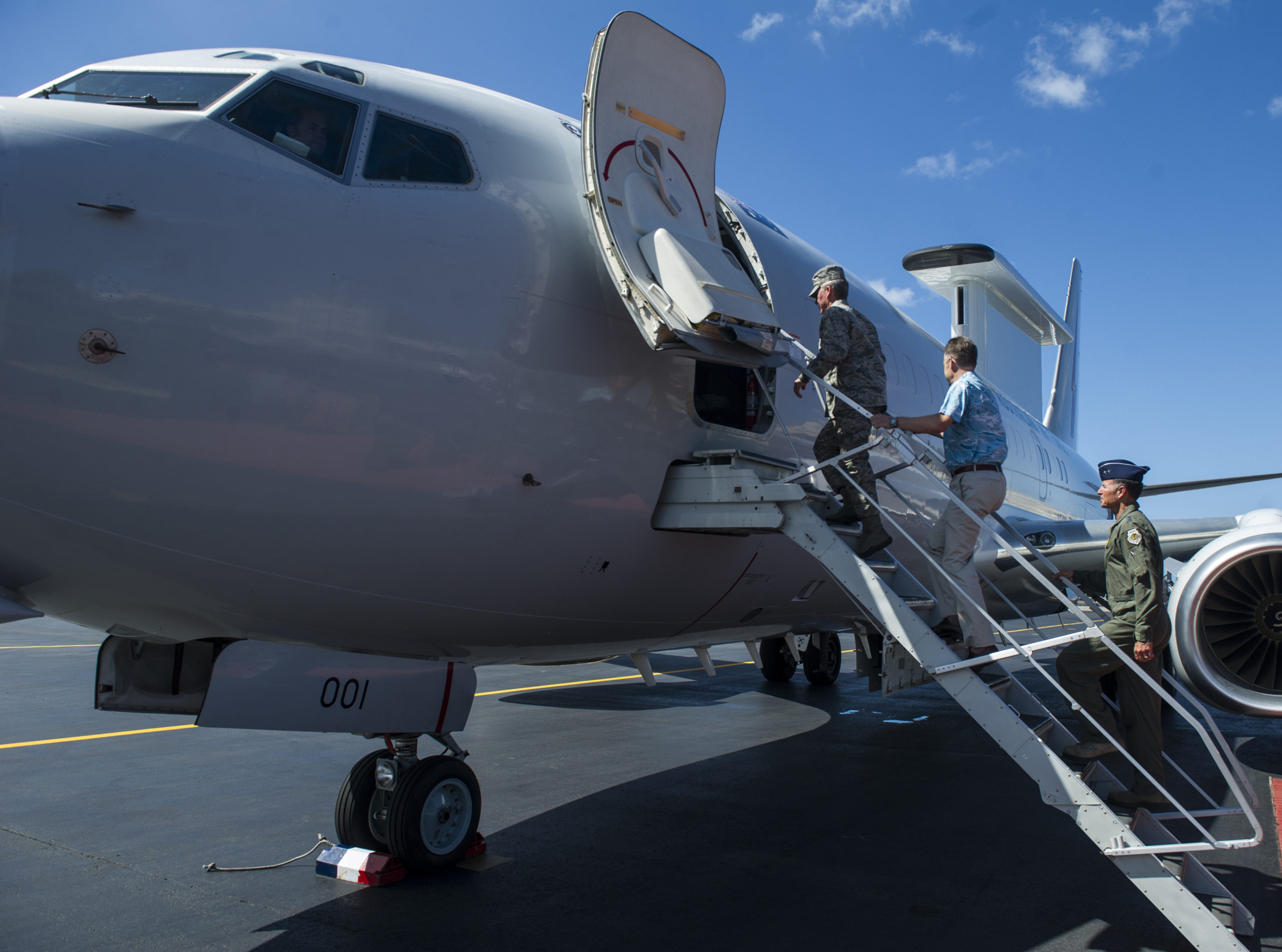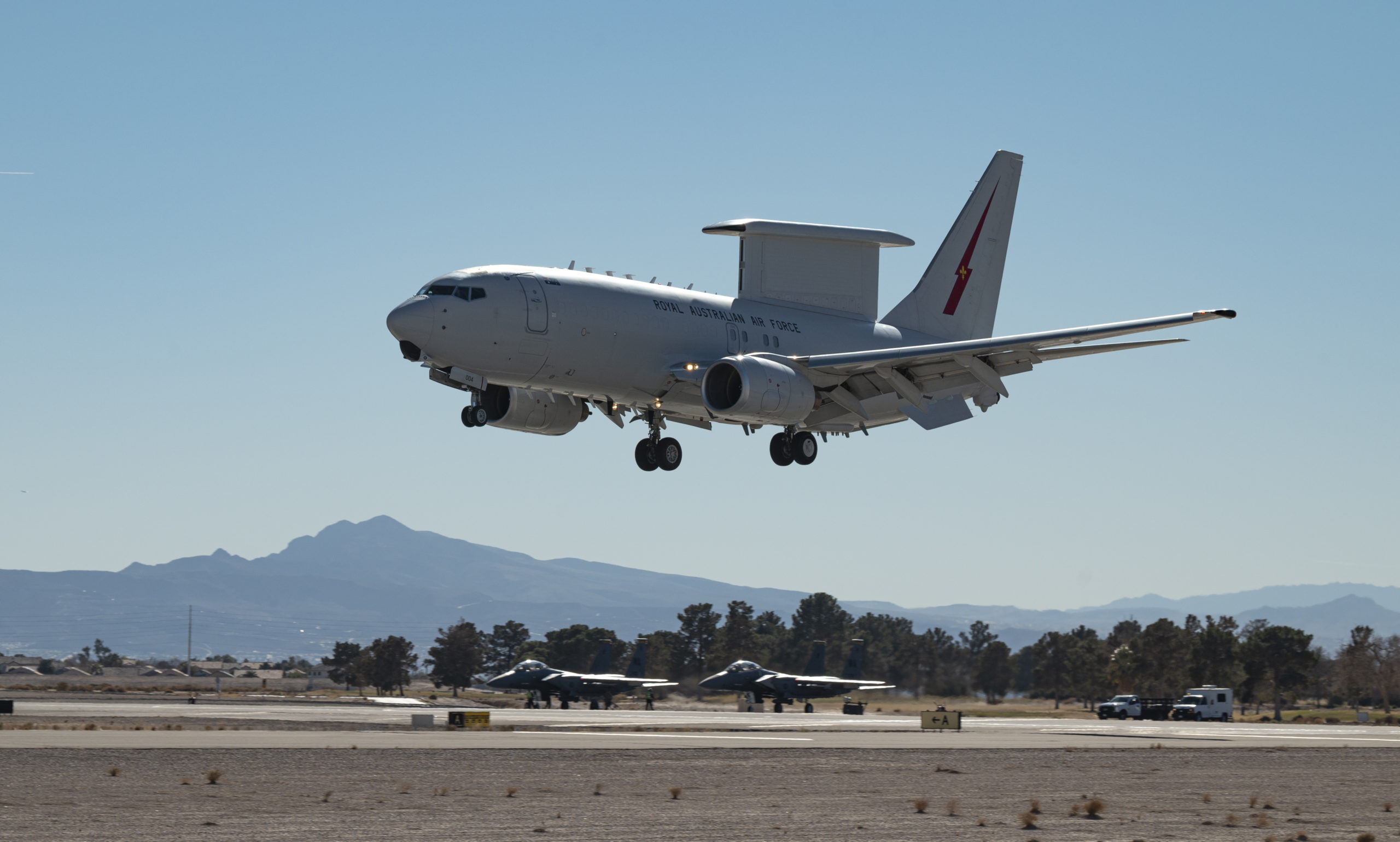By Robbin Laird
I have followed the progress of the Wedgetail since my first visits to Australia starting in 2014. This was a unique Australian capability which took time to shape and to integrate into their evolving fifth generation concepts of operations.
But they have done so and are further evolving the Wedgetail along with their focus on force integration.
In the featured photo, one sees an E-7A Wedgetail assigned to RAAF Base, Williamtown, Australia, landing at Nellis Air Force Base, Nevada, Jan. 20, 2022, for Red Flag 22-1.
In an article published by Australian Defence Business Review on February 1, 2022 and written by Andrew McLaughlin, the Wedgetail in the Red Flag exercise and USAF interest are both highlighted:
The E-7A from 2SQN based at Williamtown arrived at Nellis on January 17, and was supported by a C-17A of 36SQN which arrived in January 20. The exercise commenced on January 24, and runs to February 11.
Red Flag 22-1 is the first of three or four major exercises held at Nellis each year, with the first exercise of the year usually involving just US, UK, Canadian, and Australian participants. The other Red Flag Nellis exercises each year include NATO and other allied forces, and in the past have also included non-aligned nations such as India and Colombia.
Red Flag exercises are also regularly conducted in Alaska from Eielson AFB and JB Elmendorf and, as these focus primarily on the Pacific region, regularly include participants from Japan, South Korea, and Australia.
Reg Flag 22-1 is the first major exercise the E-7A has participated in since Boeing last October publicly disclosed the USAF has expressed an official interest in possibly acquiring the aircraft, and the USAF published a notice to study replacements for its ageing Boeing 707-based E-3 AWACS force.
The October 19 notice published on the official SAM.gov contracting website described its goal as being to, “Study and analyse activities related to the current E-7A baseline configuration, and determine what additional work the (US) Government might need to accomplish meeting USAF configuration standards and mandates.”
With the arrival of the E-7A at Red Flag 22-1, the USAF has publicly expressed its desire to study the aircraft’s capabilities during the high-end exercise.
“It’s a really fantastic opportunity to get to integrate and work closely with our key ally on what we all know is a critical and essential capability for the pacing challenges that we face in the Indo-Pacific theatre, especially, but in other theatres as well,” commander of the USAF’s Air Warfare Center, Maj Gen Case Cunningham told Air Force Magazine, adding that the exercise gave the USAF an opportunity to, “really refine the tactics, techniques, and procedures that it means to work with F-35s and F-22s, for example, in the highly contested environment, as they work in collaboration with the E-7A.”
The USAF’s Pacific Air Forces (PACAF) has particularly shown an interest in acquiring the E-7A, with the aircraft regularly deploying Red Flag Alaska, to Guam for Cope North exercises, and working with PACAF on operations in the region. Both the Chief of Staff of the USAF and the PACAF commander have lauded the aircraft’s capabilities, and have emphasised that, because it’s a proven in-service platform, it can be acquired with low risk and relatively quickly.
In November, Boeing officials told media at the Dubai Airshow that the company expects the USAF will order the E-7A in 2022. “I’m very confident that the Air Force is choosing the E-7 to replace its E-3 fleet,” Mike Manazir, Boeing’s vice president for defense business development, said in a news conference. “I believe they’ll be announcing sometime in 2022 that they’re going to move forward on the E-7. I think we’re going to be able to capitalise with all of our allies and bring that great capability to the USAF.”
The RAAF was the first operator of the E-7A, and the aircraft has also been acquired by South Korea and Turkey. The UK’s RAF has also ordered three E-7As to replace its E-3D AWACS which were retired in 2021.
And discussions with General “Hawk” Carlisle in both his positions as PACAF and then head of Air Combat Command, we discussed Wedgetail and its entrance into the allied airpower equation.
As head of ACC he noted: “Each of the new assets – the F-22, the Typhoon, the Wedgetail, and the KC-30A – have performed well. They have proven once again that if you get new assets into the hands of the young men and women in the force that amazing things can happen. The platforms have been pushed to a level that we could not guess at prior to real world operations.”
And in 2013, Carlisle as PACAF familiarized himself with the E-7 as it visited Hickam Air Base on its way back to Australia from Red Flag Alaska as can be seen in the photo below:

With the long delay on airpower modernization enforced by the strategic commitment of Washington to the Middle East land wars, in many ways, we have had a significant strategic pause in focusing on the capabilities necessary for the high-end fight or peer competitor competition.
With the return to use of airpower for something other than support for ground maneuver operations, the destruction of the Islamic State and the airpower operations over Syria, recovered the importance of innovation in airpower management, a core capability if one is going to do multi-domain operations with a joint or coalition force over an extended battlespace.
Also, see the following:
The Wedgetail Enters into Service: The Aussies Build Out their 21st Century Airpower Capabilities
From “Troubled” to Trailblazing Program: The Wedgetail and 21st Century Combat Innovation
The Next Phase in Shaping an Integrated 21st Air Combat Force: The RAF Adds Wedgetail


